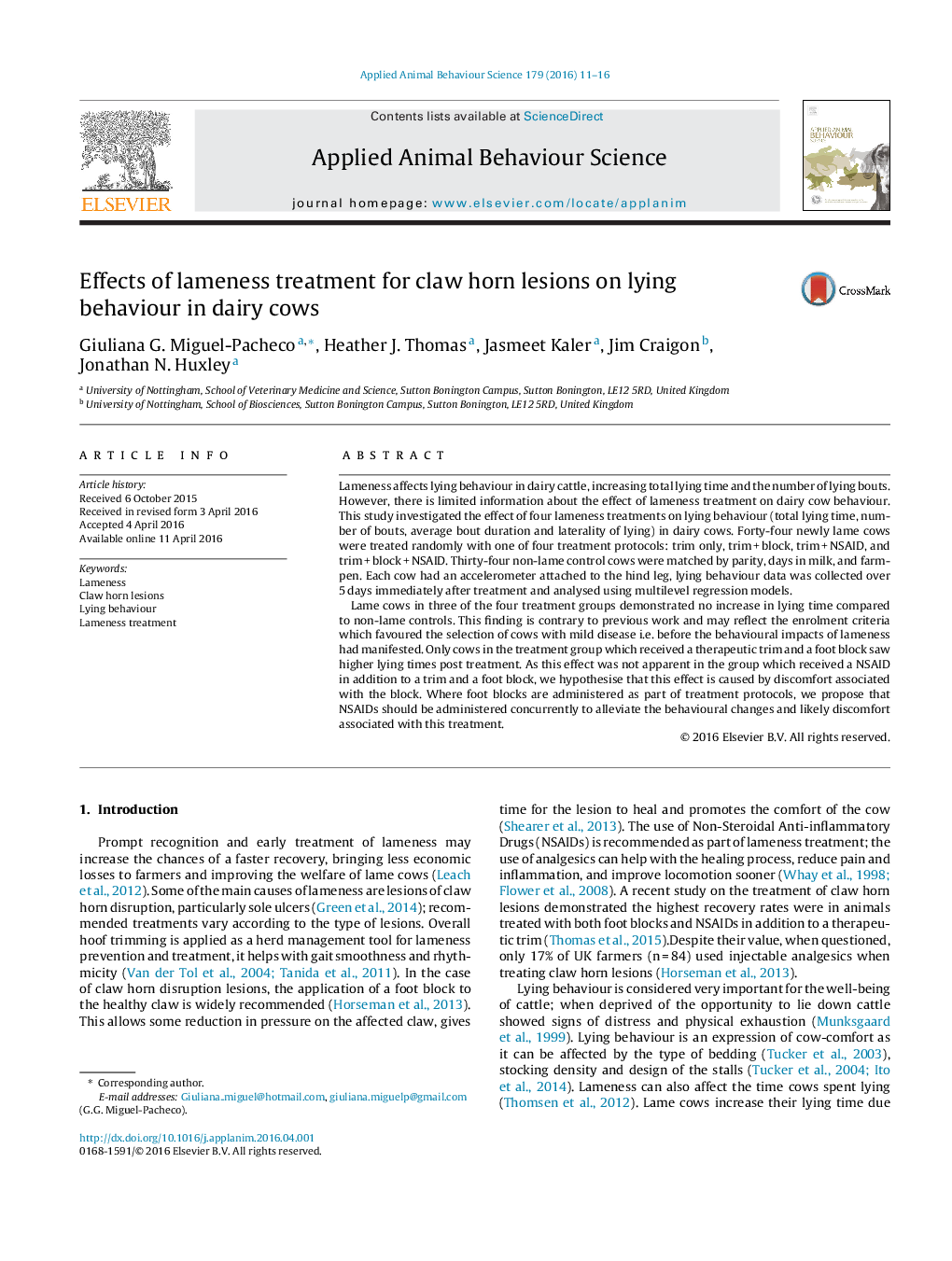| کد مقاله | کد نشریه | سال انتشار | مقاله انگلیسی | نسخه تمام متن |
|---|---|---|---|---|
| 4522366 | 1625327 | 2016 | 6 صفحه PDF | دانلود رایگان |
• Lameness treatments effect on lying behaviour on newly lame cows was examined.
• Therapeutic trim and foot block treatment increased lying time in the 5 days following treatment on newly lame cows.
• Therapeutic trim only, trimming + NSAID, and trimming + NSAID + a foot block did not affect lying behaviour in newly lame cows.
• NSAIDs should be administered when foot blocks are applied to alleviate behavioural changes associated with this treatment.
Lameness affects lying behaviour in dairy cattle, increasing total lying time and the number of lying bouts. However, there is limited information about the effect of lameness treatment on dairy cow behaviour. This study investigated the effect of four lameness treatments on lying behaviour (total lying time, number of bouts, average bout duration and laterality of lying) in dairy cows. Forty-four newly lame cows were treated randomly with one of four treatment protocols: trim only, trim + block, trim + NSAID, and trim + block + NSAID. Thirty-four non-lame control cows were matched by parity, days in milk, and farm-pen. Each cow had an accelerometer attached to the hind leg, lying behaviour data was collected over 5 days immediately after treatment and analysed using multilevel regression models.Lame cows in three of the four treatment groups demonstrated no increase in lying time compared to non-lame controls. This finding is contrary to previous work and may reflect the enrolment criteria which favoured the selection of cows with mild disease i.e. before the behavioural impacts of lameness had manifested. Only cows in the treatment group which received a therapeutic trim and a foot block saw higher lying times post treatment. As this effect was not apparent in the group which received a NSAID in addition to a trim and a foot block, we hypothesise that this effect is caused by discomfort associated with the block. Where foot blocks are administered as part of treatment protocols, we propose that NSAIDs should be administered concurrently to alleviate the behavioural changes and likely discomfort associated with this treatment.
Journal: Applied Animal Behaviour Science - Volume 179, June 2016, Pages 11–16
